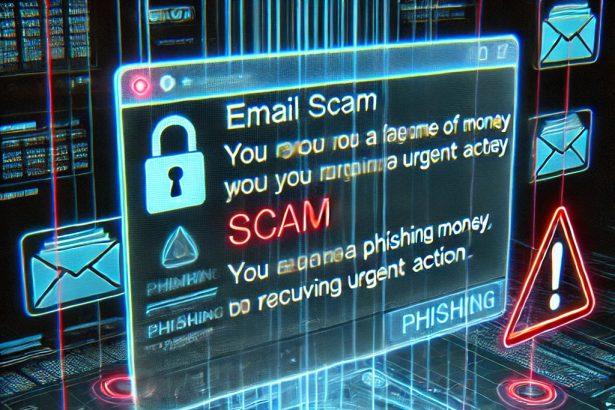The “Payment Has Been Remitted Into Your Account” email scam is a deceptive phishing campaign crafted to trick recipients into opening harmful attachments by posing as legitimate payment notifications. These emails mimic professional communication from companies and claim a payment has been processed, urging the recipient to open a linked or attached document. However, the attachment is a trap containing malicious software capable of infecting your system and stealing personal or financial data.
Threat Summary
| Attribute | Details |
|---|---|
| Threat Type | Phishing, Trojan, Password-Stealing Malware, Banking Malware, Spyware |
| Associated Email Addresses | lynn@schenkoo.com |
| Detection Names | Win32:PWSX-gen [Trj], Gen:Trojan.Olock.1, Win32/Formbook.AK, UDS:Trojan.MSIL.Injuke.gen, Trojan:Win32/Leonem |
| Symptoms of Infection | Often silent; may include unauthorized account access, system slowdown, suspicious network traffic |
| Damage | Theft of login credentials, banking data, identity information; potential for remote access or inclusion in botnets |
| Distribution Methods | Malicious email attachments, deceptive document names, social engineering |
| Danger Level | High |
| Removal Tool | SpyHunter |
Understanding the Threat
How Did I Get Infected?
This scam reaches victims through emails with titles like “PAYMENT REMITTANCE ADVICE.” The message typically informs the recipient that a payment has been processed and includes a file attachment labeled “Payment advice.r00” or something similar. When opened, the file executes a malicious payload on the system, which may lead to a full system compromise.
What Does It Do?
Once the attachment is opened and executed, the embedded malware can:
- Record keystrokes to capture passwords and other sensitive information
- Access email and banking accounts
- Transfer stolen data to remote servers
- Download additional malware or spyware to the system
These capabilities make this threat particularly dangerous, as it not only steals data but can allow attackers to maintain prolonged access.
Should You Be Worried?
Yes. Even a brief exposure to this malware can have long-lasting consequences. Victims often do not notice symptoms until after financial data or account credentials have already been compromised. If you interacted with this email or downloaded the attachment, it’s crucial to conduct a full system scan immediately using trusted anti-malware tools.
Sample Scam Email Content
Subject: PAYMENT REMITTANCE ADVICE
Dear Sir/Madam,
Good day,
Kindly note subject payment has been settled. Please find attached remittance advice for your perusal.
Have a nice day ~
Best Regards,
Lynn
Business Manager
China | Singapore | Germany
SCHENKOO AUTOMATION PTE LTD
30 Toh Guan Road #08-04
Singapore 608840
Mob: +86 150 2640 5211
Email: lynn@schenkoo.com
Attachments:
Payment advice.r00 (611 KB)
How to Manually Identify and Remove Email Scams
Manually removing email scams involves recognizing fraudulent messages, securing your accounts, and taking precautions to prevent future attacks. Follow these steps:
Step 1: Identify Suspicious Emails
Before taking action, you need to identify scam emails. Common signs include:
- Unknown Sender: Emails from unfamiliar addresses, especially if they claim to be from banks, tech support, or government agencies.
- Urgency or Threats: Scammers often pressure you to act immediately (e.g., “Your account will be closed in 24 hours!”).
- Poor Grammar & Spelling: Many scam emails contain obvious grammatical mistakes.
- Suspicious Links & Attachments: Hover over links (without clicking) to check the actual URL. If it looks odd, don’t click.
- Requests for Personal Information: Legitimate companies will never ask for passwords, Social Security numbers, or credit card details via email.
Step 2: Do Not Click Links or Download Attachments
If you suspect an email is a scam:
- Do not click on any links.
- Do not open any attachments.
- Do not reply to the sender.
Step 3: Report the Email Scam
You can report the scam email to various authorities:
- Gmail/Outlook/Yahoo Users: Click the “Report Phishing” or “Report Spam” button in your email client.
- FTC (Federal Trade Commission, USA): Report to FTC Complaint Assistant.
- Google Safe Browsing: If the scam email contains a phishing website, report it here.
Step 4: Block the Sender
- Gmail: Open the email, click the three dots in the top-right corner, and select “Block [Sender Name]”.
- Outlook: Open the email, select “Junk” > “Block Sender”.
- Yahoo Mail: Open the email, click “More” > “Block Sender”.
Step 5: Check Your Accounts for Unauthorized Activity
If you accidentally clicked a link or shared sensitive information:
- Change your passwords immediately. Use strong, unique passwords for every account.
- Enable two-factor authentication (2FA). This adds an extra layer of security to your accounts.
- Check your banking statements for unauthorized transactions.
Step 6: Scan Your Device for Malware
Some email scams contain malware hidden in attachments or malicious links. Run a full system scan using built-in tools:
- Windows Defender (Windows 10/11):
- Go to Settings > Update & Security > Windows Security > Virus & Threat Protection.
- Click “Quick Scan” or “Full Scan”.
- Mac Users:
- Use Malwarebytes for Mac or another security tool.
Step 7: Adjust Your Email Security Settings
- Enable email filtering to reduce spam and phishing emails.
- Add a third-party spam filter such as Mailwasher or Spamihilator.
- Educate yourself and others on phishing techniques to avoid future scams.
How to Remove Email Scams Using SpyHunter (Automated Method)
For users who prefer an automated, foolproof method to remove threats linked to email scams, SpyHunter offers an advanced security solution. SpyHunter is an anti-malware tool designed to detect and remove phishing-related threats, spyware, Trojans, and other cyber threats. Follow these steps:
Step 1: Download SpyHunter
- Visit the official SpyHunter download page: Download SpyHunter
- Click on “Download” and save the installation file to your computer.
Step 2: Install SpyHunter
- Locate the downloaded file (SpyHunter-Installer.exe) and double-click to open it.
- Follow the on-screen installation instructions.
- After installation, launch SpyHunter.
Step 3: Perform a Full System Scan
- Open SpyHunter and navigate to “Malware/PC Scan”.
- Click “Start Scan Now” to begin a deep scan of your system.
- SpyHunter will analyze files, registry entries, and processes for any threats linked to email scams, phishing, and malware.
Step 4: Review and Remove Detected Threats
- Once the scan completes, SpyHunter will list all detected threats.
- Click "Fix Threats" to remove them.
- Restart your computer to complete the removal process.
Step 5: Enable Real-Time Protection
SpyHunter includes real-time protection features to help prevent future infections:
- Enable Active Guards: This monitors your system for malware in real time.
- Schedule Automatic Scans: Set up periodic scans to detect new threats early.
Step 6: Keep SpyHunter Updated
- Regularly check for updates to ensure SpyHunter detects the latest threats.
- To update SpyHunter, open the app and go to "Settings" > "Update", then click "Check for Updates".
Preventing Future Email Scams
Now that you've removed email scams, take proactive steps to prevent them in the future:
Use a Secure Email Provider
- Consider switching to a secure email provider like ProtonMail or Tutanota, which offer advanced encryption.
Be Cautious with Email Links
- If you receive an email with a suspicious link, verify the website’s legitimacy before clicking.
Avoid Public Wi-Fi for Sensitive Activities
- Scammers can use public Wi-Fi to intercept your data. Use a VPN when accessing email on public networks.
Regularly Change Your Passwords
- Update your passwords every few months, and never reuse old passwords.
Use Anti-Phishing Extensions
- Install browser extensions like Bitdefender TrafficLight or Avast Online Security to detect phishing links in real-time.
Email scams are a serious cyber threat that can lead to financial loss, identity theft, or malware infections. By following the manual removal steps, you can effectively identify and remove suspicious emails on your own. However, for advanced protection, using SpyHunter ensures a more thorough and automated approach to detecting and removing phishing-related threats.
Recommended Action
For a fast and efficient way to remove email scams and related malware, download and install SpyHunter now: Download SpyHunter
By staying informed and proactive, you can protect yourself from future email scams and online threats!
Conclusion
The "Payment Has Been Remitted Into Your Account" email is a high-risk phishing scam aimed at delivering dangerous malware to your device. It uses social engineering tactics to manipulate users into opening infected attachments, leading to data theft and potential financial losses. If you suspect you've interacted with this type of email, scan your computer immediately using a trusted tool like SpyHunter to eliminate the threat.




